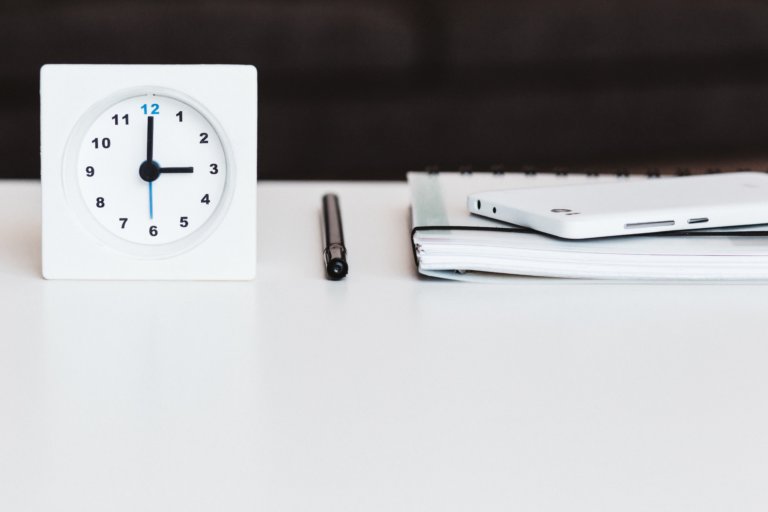The Bundy clock made a huge contribution on the road toward making recording employee work hours easier and more efficient. That said, are they still relevant in this day and age or should they be left in the past to make way for improved time tracking devices?
Tracking your employees’ work hours accurately with just pen and paper is a tough cookie to crack. Especially when doing this with full accuracy is crucial, not only in order to give your employees their fair pay, but also to make sure that you stay compliant with local rules and regulations.
Nowadays, there are many employee time tracking tools out there that can help you do this with complete ease and accuracy, all thanks to what is referred to as the first-ever time tracking device – you guessed it: the Bundy clock.
So what actually is a Bundy clock and is it still the best tool to track employee working hours?
Let’s dive in!
What Is a Bundy Time Clock?
A Bundy clock is a mechanical time clock that is used to keep track of employee work hours. It records at which date and time each employee started and ended their assigned shift by punching or stamping employees’ personal paper time cards inserted into it.
The term “bundy” is used mostly in Australian English and refers to its inventor Willard Bundy.
A Brief History of the Bundy Clock
Let’s quickly go back in time.
In 1988, a New York jeweler named Willard Bundy invented what some call the first time clock. With his invention, time records could now be kept mechanically instead of manually doing this. A year later, Willard and his brother Harlow Bundy established the Bundy Manufacturing Recording Company and began mass-producing the time recorders.
Within 10 years, the company had produced nearly 9,000 of them and created accounts with the United States Postal Service and multiple major railroad companies.
Over time, Bundy merged with several other time recording companies and became the International Time Recorder Company (ITR) in 1900. In 1911, the ITR became part of Computing-Tabulating-Recording Co., which is currently known as the International Business Machines Corporation (IBM).
How Do Bundy Clocks Work?
Bundy clocks work by having each employee insert their own paper timecard into a slot in the device that stamps or punches it with the date and time. This is done when employees arrive at and leave their workplace and can often also be used for clocking in and out from breaks.
Depending on the device or company’s needs, the same time card is used for a certain amount of days or an entire pay period. It is then handed in and passed on to the person in charge of calculating work hours and wages.
How Do Bundy Clocks Calculate Time Clock Punches?
While some Bundy clocks stamp or punch the exact date and time, others are set to round up or down to specific increments. For instance, a device might have all punches set to 6-minute intervals. If an employee punches in between 7:57 am and 8:03 am, the time will be recorded as 8:00 am, making it easier to calculate the total amount of work hours.
As work times are registered on a paper time card, each employee’s total amount of work hours will need to be collected and calculated manually by the relevant person or department in charge of this task.
Are Bundy Clocks Still Relevant Today?
To be frank: Bundy clocks have become outdated.
Nowadays, workers don’t always work in the same physical workplace to punch in and out and instead may work remotely, such as from the field or from home. You also need more than just a record of when your staff comes and goes to handle payroll. Pay rates may differ, even for the same employee, based on which jobs or projects they performed.
On top of that, recording and calculating work hours manually leave lots of room for mistakes. This is problematic as accuracy is key in paying your staff what they deserve and staying compliant with regulations.
Luckily, while the Bundy clock was a complete game-changer back in the day, employee hour trackers have since evolved into alternatives that make tracking employee work hours much simpler and more accurate.
Modern Alternatives For the Bundy Clock
Now that we know that there are other improved options out there let’s sum some of them up to get a better overview.
Time Clock Apps
Nowadays, the simplest and most efficient way to record employee work hours is with a time clock app. While it may sound intimidating at first, these are easy to use and implement.
Time clock software replaces physical time clocks and allows employees to clock in and out straight from their cell phones or computer. This makes it a great option for companies with employees working remotely, on the go, or from multiple job sites.
All time data is automatically recorded on a digital timesheet, ready to be reviewed and processed by the relevant department. Time clock apps often also enable employees to review and approve their timesheets, as well as send in absence or paid time off requests. They also often include additional features related to employee management, such as handling payroll and scheduling.
One example of a great all-in-one employee time clock app is Connecteam. With its fully automated time clock, employees can clock in and out from shifts and jobs with just the click of a button. As an admin, you can view which employees have clocked in and out, when, and from where.
All tracked hours are automatically organized on a digital timesheet, where you can easily review and manage all logged data, such as total work hours per day and payroll period, overtime, breaks, time off, and any irregularities.
When ready, you can simply export the timesheets directly to your payroll software or use one of Connecteam’s payroll integrations. This allows you to skip the entire manual process, saving you valuable time and effort.
Manage Employee Work Hours In a Breeze With Connecteam’s All-In-One Time Clock App
Track work hours, review timesheets, approve time-off requests, process payroll, and more – all with the click of a button.
Digital Clock
Digital time clocks are basically the Bundy clock 2.0. It has a similar concept: it identifies employees using a swipe card with a magnetic strip, electronic pin pad, or smart card. This way, it electronically records the date and time at which each employee started and finished their shift. With some models, you can also transfer this data to payroll software or services.
Some digital clocks also include a place, such as a website, where employees can see their time-log history, schedules or receive messages from their managers.
In the case that one company has multiple locations, certain devices can also be networked to multiple workplaces. This way, an employee can clock in at one location and clock out at the last work site visited.
Biometric Time Clocks
While biometric time clocks basically have all the same functionalities as digital time clocks, they are different in how they identify which employee is clocking in and out. Biometric time clocks identify users by their fingerprints, palm prints, facial recognition, or iris recognition. This allows you to make sure that it is indeed your employee that is clocking in and out and avoid time theft through “buddy punching” that can be an issue using digital as well as Bundy clocks. However, it is important to ensure your employees’ privacy when using such devices.
Bottom Line on Bundy Clocks
The Bundy clock was a revolutionary invention back in the late 1880s that helped businesses keep track of employee work hours with a mechanical device instead of having to do this manually with pen and paper.
Fast forward to the 21st century, employee time tracking has become so much easier with modern alternatives that make registering work hours as easy as the click of a button. Especially employee time tracking apps such as Connecteam are an easy and surprisingly affordable way to track your employees’ work hours, review timesheets, and process payroll, no matter where your employees are working from.
Streamline Your Processes with Connecteam’s Time Clock App
Have all the tools you need to manage your employees’ work hours in the palm of your hand.



